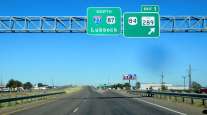North American Ports

Nearly 80% of the investment will occur at ports along the Gulf Coast, reflecting a boom in petrochemical processing and exports of oil and gas products.
Yet despite what seems like a large amount of investment, the consensus among transportation service providers is that it’s not enough.
At a recent roundtable discussion organized by AAPA, a group of transportation executives and government officials called for greater cooperation among truck, rail, air and ocean freight carriers and a push to secure more federal funding for infrastructure projects.
“Without a doubt, continued investment is critical,” said Roger Guenther, executive director of the Port of Houston.“We have the vision to expand terminals from 2 million to 5 million 20-foot equivalent units, but it’s the need for investment by the federal government to make sure [the] freight network is moving efficiently.”
Guenther said the Port of Houston recently put up $80 million for channel deepening because federal money wasn’t available, and the port needs $1 billion over the next seven to 10 years to keep up with growth.
David Manning, president of TCW Inc. in Nashville, Tennessee, and a vice chairman of American Trucking Associations, said that for every dollar invested in infrastructure, there’s $5 to $8 in benefits.
“We’re ripping through the couch cushions to look for funding to improve our roads,” he said. “The highway system ought to be funded through user fees. Gas and diesel taxes need to be increased.”
Manning also said it is essential that all of the parties involved in freight transportation work together to improve efficiency.
Bigger containerships, for example, can overload the capacity to handle containers at ports and longer hours of operation at the ports can conflict with restrictions on driver hours-of-service regulations.
“What we need to do,” said John Crowley, executive director of the National Association of Waterfront Employers, “is agree to actually collaborate.”




